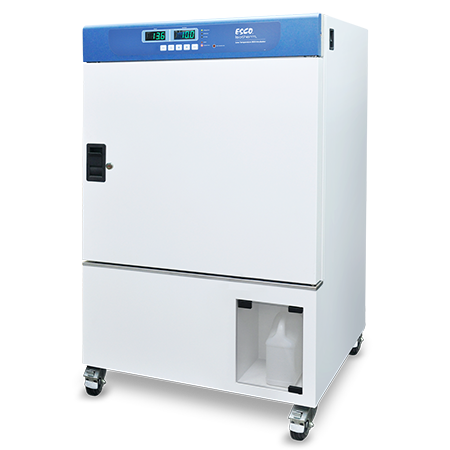Aquaculture and Its Global Relevance

With the non-stop growing world population, there are more mouths to feed. Faster and larger food production is needed to accommodate the increasing demand. The current production from agriculture alone is not sufficient to supply the high demand but with the innovations in fishing technologies, aquaculture is becoming an effective method of farming seafood.
What is Aquaculture?
Aquaculture is the controlled breeding, rearing, and harvesting of various seafood such as fish, shellfish, crustaceans, algae, and other aquatic organisms. It is one of the fastest, if not the fastest, growing food-producing sectors and currently accounts for 50% of fish for human consumption around the world. Aquaculture can be done in both inland and coastal waters. The methods can vary from onshore tanks filled with either freshwater or seawater to floating cages anchored on the seabed. In tropical and subtropical zones, ponds or open ground tanks with brackish water are used for shrimp farming.


Floating cages offshore

Open ground tanks
Besides the massive contribution to global food production, aquaculture also helps in repopulating threatened and endangered aquatic species, restoring habitats, and replenishing wild stocks of freshwater and seawater species. However, poorly managed fish farms can cause water pollution and damage to the local environment.
Types of Aquacultures
Various aquatic organisms such as fish, seaweed and macrophyte, mollusk, crustacean, and other invertebrates are grown in diverse ways. Aquaculture systems, phases of culture, and technologies are considered for successful aquaculture. Here are several types of aquacultures:

Fish farming. This is the most common and considered one of the easiest types of aquacultures. The purpose of this system is to produce a selective breed of fish, either freshwater or seawater fish, for human consumption. This method only requires a minimal care-intensive process and a lesser landmass for fish production as it only needs food and proper water conditions.

Mariculture. This type of aquaculture utilizes seawater. It can be done on a sectioned-off part of the ocean, next to the sea, or on separate ponds containing salt water. Crustaceans and mollusks such as shrimps, shellfish, and even seaweed, are typically bred here.

Algaculture. Cultivation of algae is involved in this type of aquaculture. Algae are a diverse group of eukaryotic, photosynthetic microbial organisms. They are usually grown and harvested in large quantities. Algae have a wide range of commercial and industrial uses—in cosmetics, in biochemicals, and in agriculture to name a few.

Inland Pond Culture. This is an artificial inland pond with an aeration system to introduce air for fish to grow. Constructed ponds usually support the production of freshwater fish such as catfish, tilapia, salmon, etc.

Open-net Pen and Cage Systems. This system is commonly located offshore and in freshwater lakes. It is made of mesh cages using natural waters where fish are bred and reared. Environmental regulations are observed in this type of aquaculture.

Raceway. This is one of the oldest methods for inland aquaculture. It consists of canals or basins with a continuous supply of water flow-through, providing the needed quality of water to allow optimal growth of freshwater fishes.
Laboratory Testing Involved in Aquaculture
The application of proper techniques in aquaculture is important, as well as the right technologies used to study and propagate aquatic organisms that benefit human consumption and save endangered species. Here are some tests and the equipment needed in the lab to conduct a safe, accurate, and successful aquaculture.
Water Analysis
In this testing, variables such as temperature, salinity, dissolved oxygen, alkalinity, total ammonia nitrogen, and nitrite are tested to determine the quality of water which supports aquaculture. Collected water samples are stored and preserved in a Refrigerated Incubator to keep them oxygenated and O2 stress-free.

IFC

IFA
The detection of the presence of microorganisms also falls under water analysis. A Forced Convection Laboratory Incubator is used to maintain optimal temperature vital for microbiological cultures.
Diagnostic Testing
Examination of live fish, tissue samples, and hatchery finfish and shellfish for the presence of bacteria, viruses, fungi, protozoa, or other parasites can be done in a fish pathology laboratory. With the use of engineering control equipment such as Universal Animal Research Workstations and Class II Biosafety Cabinets, laboratory personnel will be protected from biological hazards and odors while providing sterile working areas for aquatic samples.


HR1
While a live fish is preferred as a diagnostic sample, there are instances where there are no live clinical diseased/moribund fish available. In this case, dead fish or tissue samples should be kept cool in a Laboratory Refrigerator and then tested within 72 hours after collecting the sample.
The large potential aquaculture offers in providing the world population with a healthy and sustainable source of seafood may help alleviate food crisis. However, to achieve this, more research and studies must be performed to improve the current methods of aquaculture. And with Esco Lifesciences’ solutions, the next breakthrough in aquaculture can be done in a controlled and safe environment.
Read more: The Lab Cycle: Esco Scientific Quarterly Newsletter - Issue 10, Jul – Sep 2022, Agriculture and Fisheries, Water, and Education
References:
[1] C. Boyd. 2016. The importance of water analysis in aquaculture. https://www.globalseafood.org/advocate/the-importance-of-water-analysis-in-aquaculture/
[2] Conserve Energy Future. (n.d.). Aquaculture: Types, Benefits and Importance (Fish Farming). https://www.conserve-energy-future.com/aquaculture-types-benefits-importance.php
[3] Fisheries & Aquaculture. (n.d.). Food and Agriculture Organization of the United Nations. https://www.fao.org/fishery/en/aquaculture
[4] What is aquaculture? (n.d.). Aquaculture Stewardship Council. https://www.asc-aqua.org/aquaculture-explained/why-is-aquaculture-important/what-is-aquaculture/
[5] What is aquaculture? (n.d.). National Ocean Service, National Oceanic and Atmospheric Administration, US Department of Commerce. Oceanservice.noaa.gov. https://oceanservice.noaa.gov/facts/aquaculture.html#:~:text=Aquaculture%20is%20breeding%2C%20raising%2C%20and